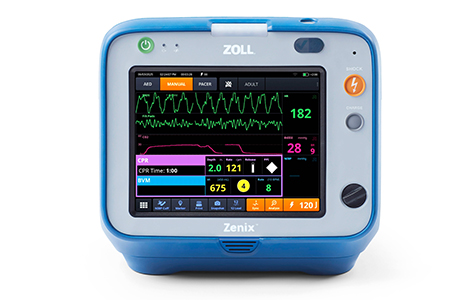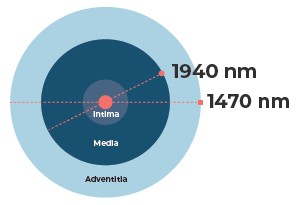A new nuclear medicine imaging method facilitates a more precise diagnosis of widespread carcinomas such as breast, colon, pancreas or lung cancer.
(Vienna, March 19, 2019) In fighting cancer an early and accurate diagnosis is crucial. A new nuclear medicine imaging method within the field of Positron emission tomography (PET) facilitates a more precise diagnosis of widespread carcinomas such as breast, colon, pancreas or lung cancer. Moreover, the novel imaging technique can combine the detection of the tumor with its treatment according to the patient“s individual needs. „By targeting a particular enzyme found on the membrane of cancer-associated fibroblasts we may achieve a better outcome than with the methods used so far,“ says Professor Uwe Haberkorn, expert of the European Association of Nuclear Medicine (EANM).
The leading part within the newly developed PET imaging concept is played by the so-called fibroblast activation protein (FAP). This enzyme is found abundantly on the membrane of Cancer-associated fibroblasts (CAFs). These cells are present in more than 90 percent of epithelial carcinomas, including for example pancreatic, colon and breast cancer. High occurence of FAP indicates a poor prognosis. However, although CAFs are involved in the growth and spreading of the tumor they are no cancer cells themselves. Since they are genetically more stable than cancer cells they are less likely to develop therapy resistance. „All these characteristics make FAP a promising target for nuclear medical diagnostic as well as therapeutic approaches,“ says EANM expert Prof. Uwe Haberkorn who developed the new imaging method together with his team in Heidelberg.
Outperforming the standard methods
PET imaging always requires that the patient be injected with a small amount of a radioactively labeled substance, a so-called tracer, by which biological processes such as the metabolism of tumor cells can be targeted and made visible through the imaging system. So far, the most commonly used tracer has been 18F-fluorodeoxyglucose (FDG), a radioactively-marked sugar, taken up by cells with high-energy consumptions such as cancer or the brain. However, as Prof. Haberkorn points out, the results achieved with FDG with regard to tumor uptake and image contrast are not always satisfactory.
Against this backdrop his team developed a novel tracer based on an FAP-specific enzyme inhibitor (FAPI), a small molecule that binds to the FAP by blocking its chemical reaction. The FAPI-tracer which is labeled with the radionuclide gallium-68 shows high uptake by the tumors but fast clearance by the healthy parts of the body. This results in high-contrast images due to very low binding to the surrounding healthy tissue in tumor patients, thus clearly outperforming FDG in important regions of metastatic disease such as the liver and the brain. The positive outcome has been repeatedly demonstrated by a number of preclinical and clinical studies.
Intertwining diagnosis and therapy
„Radiolabeled FAPIs allow for fast imaging with very high contrast in all tumors that contain a high amount of connective tissue cells,“ says Prof. Haberkorn. But there is even more to it: „FAPIs, as opposed to FDG, can also be employed for treatment purposes. This is due to chemical properties allowing labeling not only with gallium-68, but also with radionuclides such as rhenium-188 (188Re), lead-212 (212Pb) or yttrium-90 (90Y) that can be used to destroy the tumor. That means, a theranostic approach – a tight intertwining of diagnosis and therapy taylored to the individual patient“s needs – seems feasible.“ FAPI-imaging is not even restriced to cancer since it can be applied to all processes that involve the remodelling of tissue. This makes it very likely that the technique will soon be used for diagnosing and treating non-cancerous conditions too, such as cardiovascular and rheumatic diseases as well as fibroses of the lung, the liver and the kidney. So far, the new tracer has been successfully applied to several hundreds of patients in a number of hospitals in Germany, and is currently being used for preclinical studies in the US and Japan. „FAPI-imaging has opened up a promising avenue for the detection and treatment of many malignant tumors and offers additional potential with respect to several other diseases,“ says Prof. Haberkorn.
Presseagentur für Medizinthemen
Contact
impressum health & science communication
Frank von Spee
Hohe Brücke 1
20459 Hamburg
Phone: 040 31786410
E-Mail: vonspee@impressum.de
Url: http://www.impressum.de






